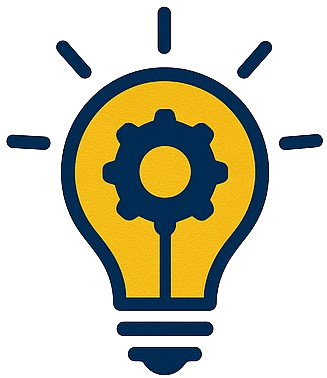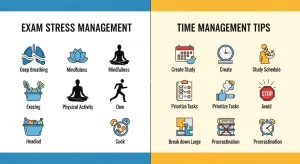In today’s fast-paced world, stress and anxiety have become unwelcome companions for millions of people. Whether it’s work pressure, relationship challenges, or the constant stream of information we process daily, finding effective ways to manage stress is more crucial than ever. The good news? Simple daily meditation and breathing exercises for stress relief can transform your mental well-being in just minutes a day.
Taking a deep breath is one of the easiest and most effective ways to relieve stress, and when combined with structured meditation practices, these techniques create a powerful toolkit for achieving inner peace and emotional balance.
Simple Office Desk Stretches to Stay Active at Work
The Science Behind Meditation for Stress Relief
Research consistently demonstrates the profound impact of meditation and breathing exercises on our nervous system. Mindfulness-Based Stress Reduction (MBSR) and Mindfulness-Based Cognitive Therapy (MBCT) have demonstrated efficacy in reducing anxiety and depression symptom severity in a broad range of treatment-seeking individuals.
Scientific Benefits of Regular Practice:
- Reduced cortisol (stress hormone) levels
- Improved emotional regulation
- Enhanced focus and mental clarity
- Better sleep quality and duration
- Strengthened immune system response
- Lower blood pressure and heart rate
Daily 5-min cyclic sighing has promise as an effective stress relief technique, showing that even brief sessions can produce measurable improvements in mood and physiological arousal.
Understanding Stress and Its Impact on Daily Life
Before diving into specific anxiety relief techniques, it’s important to recognize how chronic stress affects our bodies and minds. Prolonged stress creates a cascade of physical and emotional symptoms that can significantly impact quality of life.
Common Stress Symptoms:
- Physical tension and muscle aches
- Difficulty concentrating or making decisions
- Sleep disturbances and fatigue
- Irritability and mood swings
- Digestive issues and appetite changes
- Weakened immune system
The beauty of mindfulness meditation and breathing exercises lies in their ability to interrupt this stress cycle naturally, providing immediate relief while building long-term resilience.
Quick Home Workout Routines for Busy Professionals
Essential Breathing Exercises for Stress Relief
1. Box Breathing Technique
Box breathing can be particularly helpful with relaxation and can be implemented before, during, and/or after stressful experiences. This fundamental stress reduction method creates a sense of calm through rhythmic breathing patterns.
How to Practice Box Breathing:
- Inhale slowly for 4 counts
- Hold your breath for 4 counts
- Exhale slowly for 4 counts
- Hold empty for 4 counts
- Repeat 4-8 cycles
Benefits: Immediate anxiety relief, improved focus, better emotional regulation
2. Cyclic Sighing for Rapid Relief
This powerful breathing exercise has gained scientific attention for its remarkable effectiveness. Breathwork, especially the exhale-focused cyclic sighing, produces greater improvement in mood and reduction in respiratory rate compared with mindfulness meditation.
Cyclic Sighing Steps:
- Take a normal inhale through your nose
- Add a second, smaller inhale on top
- Long, slow exhale through your mouth
- Repeat for 5-10 cycles
When to Use: During acute stress, before important meetings, or when feeling overwhelmed
3. 4-7-8 Breathing for Deep Relaxation
This ancient technique promotes deep relaxation and is particularly effective for bedtime stress relief.
4-7-8 Technique:
- Exhale completely through your mouth
- Close your mouth, inhale through nose for 4 counts
- Hold breath for 7 counts
- Exhale through mouth for 8 counts
- Repeat 3-4 times initially
Top 10 Superfoods for Your Daily Diet Boost Health
4. Diaphragmatic Breathing for Foundation Building
Also known as belly breathing, this technique forms the foundation of all effective breathing exercises for stress.
Practice Guidelines:
- Place one hand on chest, one on belly
- Breathe so only the bottom hand moves
- Inhale slowly through nose for 3-4 counts
- Exhale slowly through mouth for 6-8 counts
- Practice 5-10 minutes daily
Daily Meditation Practice for Long-Term Stress Management
Mindfulness Meditation Basics
Engaging with the world around you can lower your stress through mindfulness meditation practice. This foundational approach teaches awareness without judgment, creating space between you and your stressful thoughts.
5-Minute Morning Mindfulness Routine:
- Find a comfortable seated position
- Close your eyes and focus on your breath
- Notice thoughts without engaging them
- Return attention to breathing when distracted
- End with 30 seconds of gratitude reflection
Body Scan Meditation for Physical Tension Release
This technique systematically releases physical stress held throughout the body.
Progressive Body Scan Steps:
- Start at the top of your head
- Slowly move attention through each body part
- Notice areas of tension without trying to change them
- Breathe into tense areas with compassion
- Complete scan from head to toes (10-15 minutes)
Loving-Kindness Meditation for Emotional Balance
This practice cultivates positive emotions and reduces stress-related negativity.
Loving-Kindness Phrases:
- “May I be happy and healthy”
- “May I be at peace”
- “May I be free from suffering”
- Extend wishes to loved ones, neutral people, then challenging relationships
Meal Planning for Weight Loss Ultimate Guide
Creating Your Personal Daily Meditation Schedule
Beginner’s Progressive Plan
| Week | Morning Practice | Evening Practice | Total Time |
|---|---|---|---|
| 1-2 | 5 min breathing | 5 min body scan | 10 min/day |
| 3-4 | 7 min mindfulness | 8 min breathing | 15 min/day |
| 5-6 | 10 min meditation | 10 min mixed practice | 20 min/day |
| 7+ | Personalized routine based on preferences | 20-30 min/day |
Advanced Stress Reduction Methods
Intensive Relief Protocol (for high-stress periods):
- Morning: 10 minutes mindfulness meditation
- Midday: 5 minutes box breathing
- Afternoon: 3 minutes cyclic sighing
- Evening: 15 minutes body scan meditation
Maintenance Protocol (for ongoing wellness):
- Daily: 15 minutes mixed meditation practice
- Weekly: One longer 30-45 minute session
- Monthly: Meditation retreat or intensive practice day
Best Healthy Snacks to Keep You Energized All Day
Top 5 Amazon Affiliate Meditation Products
- Meditation Cushion Zabuton Floor Pillow Set –
- Tibetan Singing Bowl Set with Mallet and Cushion –
- Essential Oils Diffuser for Aromatherapy Meditation –
- Weighted Blanket for Anxiety Relief and Better Sleep –
- Meditation Timer with Gentle Chimes –
Overcoming Common Meditation Challenges
“I Don’t Have Time” Solutions
Micro-Meditation Strategies:
- 2-minute breathing breaks between meetings
- Mindful walking to the coffee machine
- 30-second breath awareness at traffic lights
- 1-minute body scan during lunch break
“My Mind Won’t Stop Racing” Techniques
Racing thoughts are normal, especially when beginning meditation for stress relief. The goal isn’t to stop thoughts but to change your relationship with them.
Working with Busy Mind:
- Label thoughts as “thinking” and return to breath
- Use counting: count breaths 1-10, then repeat
- Try guided meditations initially
- Practice self-compassion when mind wanders
Building Consistency in Daily Practice
Habit Stacking Strategies:
- Link meditation to existing habits (after coffee, before shower)
- Set specific times rather than vague intentions
- Create a dedicated meditation space
- Track practice with apps or journals
- Start small and gradually increase duration
Intermittent Fasting 101: Benefits and Tips
Integrating Mindfulness Techniques Throughout Your Day
Workplace Stress Reduction
Office-Friendly Practices:
- Desk breathing exercises between tasks
- Mindful email checking (pause before opening inbox)
- Walking meditation to meetings
- Mindful eating during lunch breaks
- End-of-day transition ritual
Family and Relationship Stress Management
Communication Enhancement:
- Pause and breathe before responding to conflict
- Practice active listening with full presence
- Use loving-kindness meditation for difficult relationships
- Create family mindfulness moments
- Model stress reduction methods for children
Wearable Health Trackers for Daily Wellness
Advanced Anxiety Relief Techniques
Cognitive Integration with Mindfulness
Combining mindfulness techniques with cognitive strategies enhances stress relief effectiveness:
Thought Observation Practice:
- Notice anxious thoughts arising
- Label them: “I’m having the thought that…”
- Observe physical sensations
- Apply breathing exercises for immediate relief
- Return to present moment awareness
Crisis Intervention Breathing
For acute anxiety or panic situations:
Emergency Calm Protocol:
- Exhale completely to reset breathing
- Count breathing: 4 in, 6 out
- Ground using 5-4-3-2-1 technique (5 things you see, 4 you hear, etc.)
- Repeat calming affirmations
- Seek support if needed
Complete Guide to Holistic Self-Care Practices
Frequently Asked Questions
How long should I practice daily meditation and breathing exercises for stress relief?
Five to twelve minutes of daily mindfulness meditation is associated with decreased stress and anxiety, with greater changes observed following more minutes of meditation. For beginners, start with just 5 minutes daily and gradually increase to 15-20 minutes as you build consistency. The key is regular practice rather than long sessions – even brief 2-3 minute breathing exercises for stress can provide immediate relief when practiced consistently throughout the day.
Can meditation for stress relief really help with severe anxiety disorders?
Yes, research shows significant benefits for anxiety disorders. Regular mindfulness practice increases awareness and acceptance of negative feelings, leading to healthier coping and less anxiety. Even short 10-minute meditation sessions can provide significant benefits. However, severe anxiety may require professional support alongside meditation practice. These mindfulness techniques work excellently as complementary treatments and can enhance traditional therapy outcomes.
What’s the difference between breathing exercises and meditation for stress management?
Breathing exercises for stress are specific techniques focused on controlling and observing breath patterns for immediate relief, while meditation for stress relief encompasses broader mindfulness practices including breath awareness, body scanning, and thought observation. Breathing exercises can be practiced anywhere in just 1-2 minutes, making them perfect for acute stress situations. Daily meditation practice builds long-term resilience and emotional regulation. Both stress reduction methods complement each other perfectly – breathing exercises provide immediate relief while meditation creates lasting change.
The Ultimate Guide to the Best Workout Apps and Online Classes in 2025
Transform Your Life with Daily Stress Relief Practice
Implementing daily meditation and breathing exercises for stress relief isn’t just about managing difficult moments – it’s about fundamentally transforming your relationship with stress and anxiety. These evidence-based practices create lasting changes in brain structure and function, leading to greater emotional resilience and life satisfaction.
The journey begins with a single breath. Whether you’re dealing with workplace pressure, relationship stress, or general life overwhelm, these mindfulness techniques provide practical, accessible tools for immediate relief and long-term wellness.
Ready to begin your stress-free journey? Start with just 5 minutes of daily practice using these proven anxiety relief techniques. Your future self will thank you for taking this powerful step toward inner peace and emotional freedom.
🧘♀️ Create Your Perfect Meditation Space: Transform your home into a sanctuary of peace with our top-rated meditation cushion and essential oils diffuser combo – [Amazon ]
Disclaimer: These meditation and breathing practices are for general wellness purposes and are not intended to replace professional medical treatment. If you experience severe anxiety, panic disorders, or persistent mental health concerns, please consult with a qualified healthcare provider or mental health professional











